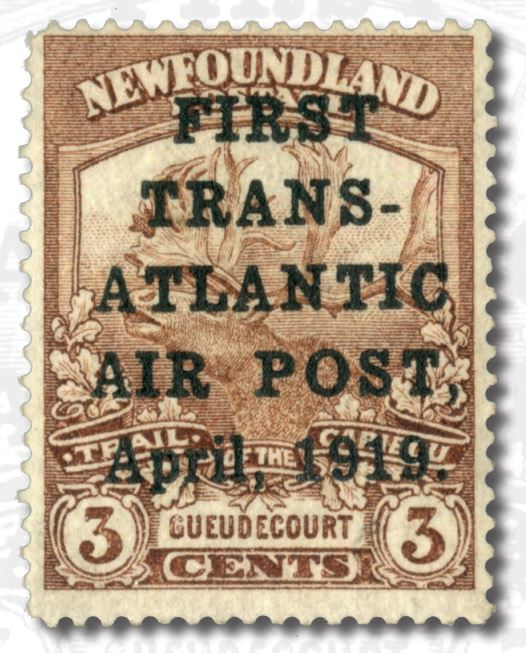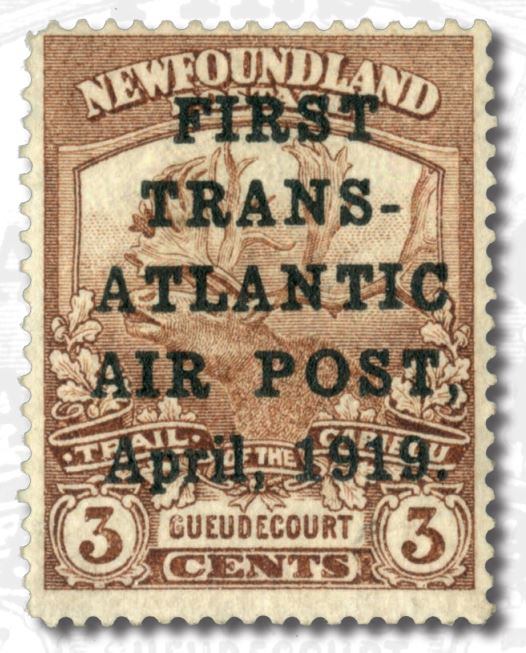INSIDER 30 | THE STORY BEHIND THE STAMP | Newfoundland 1919 3C. Brown ‘Hawker’ Air Mail

by George James

The 7th March Lionheart auction saw the sale of a particularly interesting lot, number 1584 on the day, with an estimate of £12,000-£15,000.
The stamp underlying stamp, 3c Brown Caribou, is virtually worthless; it is the overprint, and more importantly the story behind it that gives the stamp its value.
In 1913 the Daily Mail offered a prize of £10,000, an enormous amount of money at the time, to the first aviator to complete a trans-Atlantic flight in under 72 continuous hours.
The outbreak of the First World War put a stop to early efforts and the competition was reopened after Armistice Day in 1918.
Lt Harry George Hawker, formerly Sopwith’s chief test pilot, and his navigator Lt Cmdr Kenneth McKenzie Grieve were the first to attempt to win the prize. The local postmaster prepared a sheet of 200 overprinted stamps to commemorate the flight, and signed his initials on the reverse of each example. Of these 200, 18 were damaged or destroyed, 95 were used as flight cover frankings, 11 were given away as presentation examples and the remaining 76 sold for the benefit of the Marine Disasters Fund, meaning that only 87 mint examples are possible, with the surviving figure believed to be much less.
The flight itself was eventful; setting off from Newfoundland in their specially designed Sopwith Atlantic, the pair encountered difficulties during the first night, when the engine overheated, possibly because of a blocked cooling filter. After attempting to clear the blockage by diving the aircraft, stopping, and restarting the engine, the problem persisted, and after spotting inclement weather ahead, they turned south to seek out the shipping lanes, eventually ditching in the Atlantic after encountering the Danish steamer SS Mary. At the time, they were 1,130 miles from Newfoundland, and 750 miles from Ireland, meaning that while Alcock and Brown would claim the £10,000 prize a month later, Hawker still received a prize of £5,000 for the less glamorous honour of being the first man to fly 1,000 miles over the ocean without ditching.
The SS Mary was not fitted with a radio, so news of the rescue had not reached the rest of the world. As it was feared the men had been killed, King George V sent a telegram of condolence, though the news quickly spread when the SS Mary reached Scotland on 25th May. On 28th May, Hawker and Grieve were received by King George V at Buckingham Palace, where they were both awarded the Air Force Cross for valour.
The story doesn’t quite end there, however. The Sopwith Atlantic was adapted from a First World War bombing aircraft, the Sopwith B-1, whose fuselage had been adapted to work as a boat, to save the crew should the flight encounter trouble over the ocean. As the flight ditched insight of the SS Mary this capability was never tested, although the modification did end up featuring in the story of the stamp: several weeks later the body of the aircraft and its mailbag were recovered from the ocean, meaning that the envelopes contained could be processed and forwarded to their (no doubt extremely surprised!) recipients.



